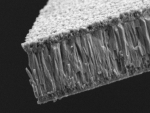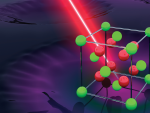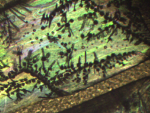PROPERTIES REFLECT THE STRUCTURE
 Ceramics were the first artificial material utilized by mankind. Since the dawn of civilization, polycrystalline non-metallic materials, that now we called ceramics, occupy very important but ever changing place in our life. Ceramic thin films used a very large range of every day-use devices ranging from photo cameras to speakers, cellular phones and the vast majority of computer chips.
Ceramics were the first artificial material utilized by mankind. Since the dawn of civilization, polycrystalline non-metallic materials, that now we called ceramics, occupy very important but ever changing place in our life. Ceramic thin films used a very large range of every day-use devices ranging from photo cameras to speakers, cellular phones and the vast majority of computer chips.
Device miniaturization poses new challenges for ceramic science in general and for the field ceramics thin films in particular. This is because integration of materials at small scale requires fine tuning not only of "functional" properties, i.e., dielectric, piezo- and pyro-electric, ion-conducting, but elastic properties as well. For example, small difference in thermal expansion coefficient may result in large stress between adjacent layers. In large structures (bridges, buildings, roads), such differences are mitigated by incorporating special elements (like "expansion joints). However in devices that are few hundred µm at best, there is no place for such "big" solution and the contacting materials "adapt" to each other.
Therefore, we "teach" materials to exhibit very unusual elastic and electrical properties. Over the years, the group investigated rubber like-ceramics, self-organization of nanocrystalline ferroelectric grains into macro-domains and formation non-crystalline polar phase. These projects heavily relied on the knowledge in structural chemistry and materials science and employ a vast range of micro-fabrication, structural and electrical characterization techniques.





